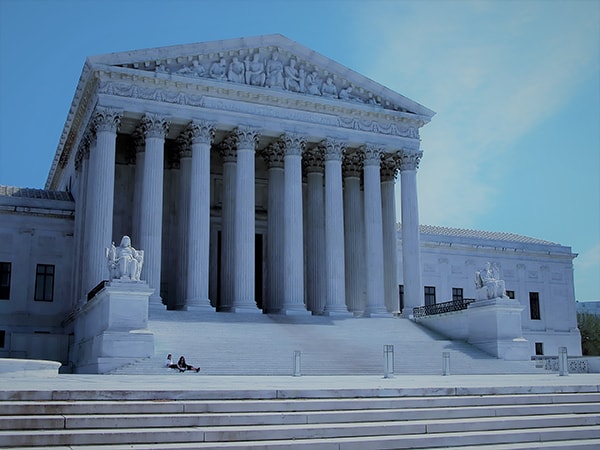Leading Federal Appeal Attorneys: Your Companions in Browsing the Appeals Process
Leading Federal Appeal Attorneys: Your Companions in Browsing the Appeals Process
Blog Article
Demystifying the Refine of Federal Appeals: What You Required to Know
Browsing the complex world of government charms can often feel like traversing uncharted waters for those unfamiliar with the procedure. Recognizing the subtleties of appellate court territory, the complexities of filing a notification of allure, presenting an engaging brief, and making a persuasive oral argument are important parts that can substantially impact the end result of an instance. By deciphering the layers of complexity surrounding federal allures, individuals can gain a clearer understanding right into the devices that regulate this critical point of the legal system.
Understanding Federal Appeals Refine
Diving right into the intricate world of the government allures procedure introduces a organized and systematic trip via the judicial system. Federal allures work as a crucial system for reviewing choices made by reduced courts. Comprehending this process is essential for any person included in legal proceedings at the government degree.
The procedure commonly starts with an event dissatisfied with a reduced court's judgment filing a notice of charm. This causes an evaluation by a greater court, where a panel of judges analyzes the lawful debates provided by both parties. Briefs detailing the legal reasoning behind each party's placement are submitted, and oral disagreements might be heard to clarify intricate concerns.
The appellate court's decision is based on a detailed exam of the lower court's proceedings and the arguments provided. The courts do not review facts yet concentrate on whether legal errors happened that influenced the reduced court's choice. As soon as the appellate court gets to a choice, it can attest, turn around, remand, or customize the reduced court's judgment, offering quality and finality to the lawful dispute. Comprehending this process is important for navigating the complexities of federal charms effectively.
Appellate Court Jurisdiction Clarified
Appellate court jurisdiction refers to the extent of situations that a particular appellate court has the power to determine and examine upon. Unlike test courts that listen to situations for the initial time, appellate courts are limited to assessing choices made by lower courts.
Appellate courts have jurisdiction over details kinds of cases, typically those including legal mistakes, step-by-step issues, or questions of regulation rather than factual disagreements. The jurisdiction of appellate courts is usually outlined in laws and laws that control the court system. Comprehending appellate court territory is critical for celebrations entailed in the appeals process as it identifies whether an instance is eligible for testimonial and the level to which the appellate court can interfere in the reduced court's decision.
Declaring a Notice of Allure
The preliminary action in commencing the government appeals procedure involves submitting a Notification of Appeal with the proper appellate court. This essential record officially alerts the court and the other celebrations entailed in the instance that the appealing event means to seek a testimonial of the lower court's decision. Submitting a Notice of Allure is a rigorous step-by-step demand that sets the appellate process in activity.
When preparing the Notification of Allure, it is vital to make certain conformity with the details guidelines and guidelines of the relevant appellate court. federal appeal attorneys. The document should generally consist of information such as the case name, the lower court's name, the date of the judgment being appealed, and a succinct statement indicating the grounds for the charm

Briefing and Dental Argument
In the appellate procedure, providing composed briefs and taking part in dental debates play pivotal functions in promoting for the appealing party's position prior to the appellate court. Briefs are extensive legal documents that lay out the parties' debates, legal authorities, and evaluation supporting their settings. These composed submissions give the court with a thorough understanding of the facts of the instance, the pertinent regulation, and why the appealing party thinks the reduced court's choice must be rescinded.
Adhering to the submission and review of the briefs, oral disagreements use the events an opportunity to additional clarify their placements, attend to any kind of inquiries the appellate judges might have, and highlight crucial factors from their written briefs. Oral debates are a possibility for the lawyers to convince the judges with verbal campaigning for and responses to inquiries from the bench.
Both the created briefs and oral arguments are essential components of the appellate process, permitting celebrations to provide their instance thoroughly and compellingly prior to the appellate court. - federal crime lawyer
Receiving the Appellate Court Choice
Upon completion find out here now of oral arguments and submission of created briefs, the following critical stage in the appellate process includes awaiting the crucial judgment from the appellate court. This duration of anticipation can be loaded with a mix of stress and anxiety and hope for events involved in the appeal. The appellate court's decision is usually supplied in a created format and describes the court's conclusions on the legal concerns provided, the thinking behind their decision, and the judgment rendered. The time framework for obtaining the appellate court's choice can vary, but courts make every effort to offer timely resolutions. Once the choice is issued, celebrations need to thoroughly evaluate the court's judgment to recognize the outcome and establish any type of additional steps that may be essential. Whether the appellate court verifies, reverses, or remands the reduced court's decision, understanding the effects of the ruling is important for all celebrations entailed in the appellate process. Therefore, without delay evaluating and understanding the appellate court's decision is important in navigating the following steps in the legal procedures.
Conclusion
Recognizing the appellate court territory, filing a notice of allure, preparing briefs, and offering dental debates are all essential elements of this process. Ultimately, receiving the appellate court choice can provide quality and resolution to lawful conflicts.
As we progress from understanding the federal allures procedure to studying the ins and outs of appellate court jurisdiction, an essential aspect comes to light relating to the authority and limits of these greater courts in the legal landscape. Appellate court jurisdiction refers to the scope of instances that a specific appellate court has the power to evaluate and choose upon. Unlike test courts that hear instances for the first time, appellate courts are restricted to evaluating choices made by lower courts. Understanding appellate court territory is vital for parties included in the appeals process as it identifies whether a case is eligible for testimonial and the level to which the appellate court can intervene in the lower court's choice.

Report this page